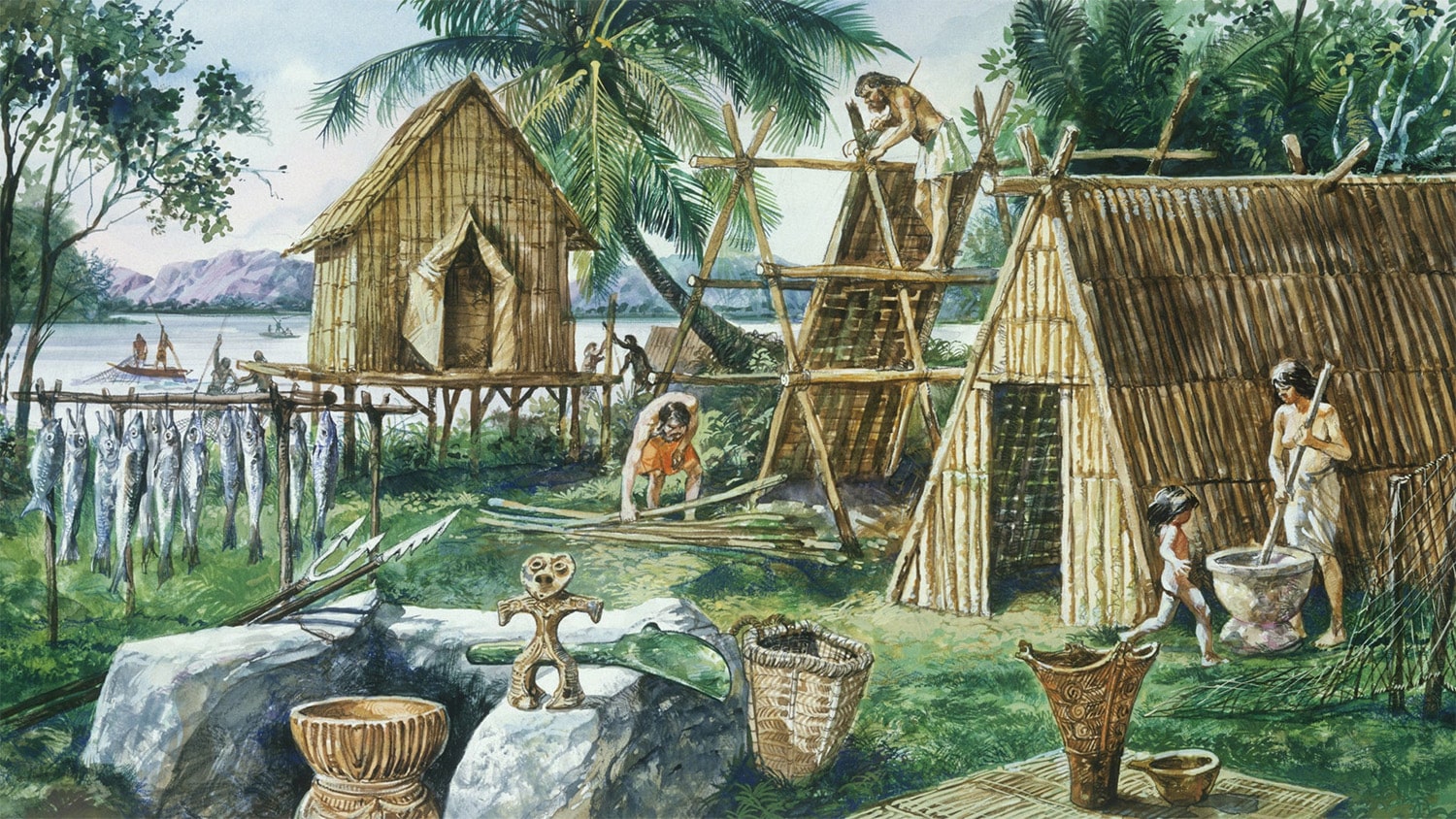
30 interesting facts about Neolithic Revolution
- 👁️ 371
The Neolithic Revolution, a pivotal moment in human history, marked the transition from nomadic hunter-gatherer societies to settled agricultural communities. This profound change, occurring around 12,000 years ago, laid the foundation for modern civilization, altering the course of human evolution and societal development. It wasn’t merely about the domestication of plants and animals; it represented a radical shift in human interaction with the environment, social structures, and economic practices. The ripple effects of this revolution are still felt today, as it set the stage for the rise of cities, complex societies, and technological advancements. Let’s explore some fascinating facts about the Neolithic Revolution and uncover the layers of impact it has had on human history.
- The Neolithic Revolution began around 10,000 BCE in the Fertile Crescent, a region in the Middle East.
- It is characterized by the domestication of animals, including sheep, goats, pigs, and cattle, for food, clothing, and labor.
- The revolution also saw the cultivation of crops like wheat, barley, peas, and lentils, fundamentally changing human diets.
- Permanent settlements, such as Jericho in the Levant, emerged as a result of agricultural development.
- This era witnessed the invention of farming tools, including plows and sickles, to aid in agriculture.
- Pottery was developed to store and transport food and water, reflecting advancements in material culture.
- The Neolithic period led to an increase in population due to more reliable food sources.
- Social stratification began to emerge as a result of surplus food production and wealth accumulation.
- The construction of megalithic structures, such as Stonehenge, illustrates the architectural achievements of Neolithic societies.
- Domestication of the dog from wolves occurred during this period, aiding in hunting and providing companionship.
- The Neolithic Revolution spread from the Middle East to Europe, Asia, and North Africa over several thousand years.
- It introduced the concept of private property and land ownership, altering previous notions of communal living.
- The shift to agriculture led to the first instances of environmental degradation and deforestation.
- Trade networks developed to exchange surplus goods, materials, and knowledge between communities.
- Advances in textile production, including weaving and spinning, allowed for the creation of varied clothing.
- The period saw the development of writing systems, like cuneiform in Mesopotamia, as societies became more complex.
- Religious and spiritual practices became more organized, often centered around agricultural deities and fertility.
- Innovations such as the wheel and the plow significantly improved transportation and farming efficiency.
- Settlements during the Neolithic era often featured granaries for storing excess crops.
- The concept of calendar and time measurement evolved to manage agricultural cycles and religious ceremonies.
- Communities began to fortify settlements, indicating the emergence of conflict and warfare over resources.
- The diet diversification included the introduction of dairy products, with the domestication of milk-producing animals.
- Sedentary lifestyles led to the development of diseases associated with close living quarters and domesticated animals.
- The Neolithic era saw the first evidence of dental caries and other diseases related to diet changes.
- Skilled craftsmanship in tool-making, pottery, and textiles became a hallmark of Neolithic societies.
- The practice of burying the dead with goods suggests beliefs in an afterlife and the importance of social status.
- Animal husbandry not only provided food but also raw materials like bones, hides, and wool for various uses.
- Water management techniques, including irrigation, were developed to support agriculture in arid regions.
- The Neolithic Revolution laid the groundwork for the development of written language and record-keeping.
- The transition to a sedentary lifestyle significantly impacted human biology, leading to changes in skeletal structure.
The Neolithic Revolution was not just a shift in subsistence practices; it was a profound transformation that reshaped humanity’s relationship with the earth and with each other. It set in motion the development of complex societies, economies, and cultures that paved the way for civilizations to flourish. By transitioning from nomadic to settled lifestyles, humans embarked on a journey of innovation, social complexity, and environmental interaction that continues to influence the world today. The legacy of the Neolithic Revolution is a testament to human ingenuity and adaptability, marking the beginning of a new era in human history.
The Neolithic Revolution, a pivotal moment in human history, marked the transition from nomadic hunter-gatherer societies to settled agricultural communities. This profound change, occurring around 12,000 years ago, laid the foundation for modern civilization, altering the course of human evolution and societal development. It wasn’t merely about the domestication of…